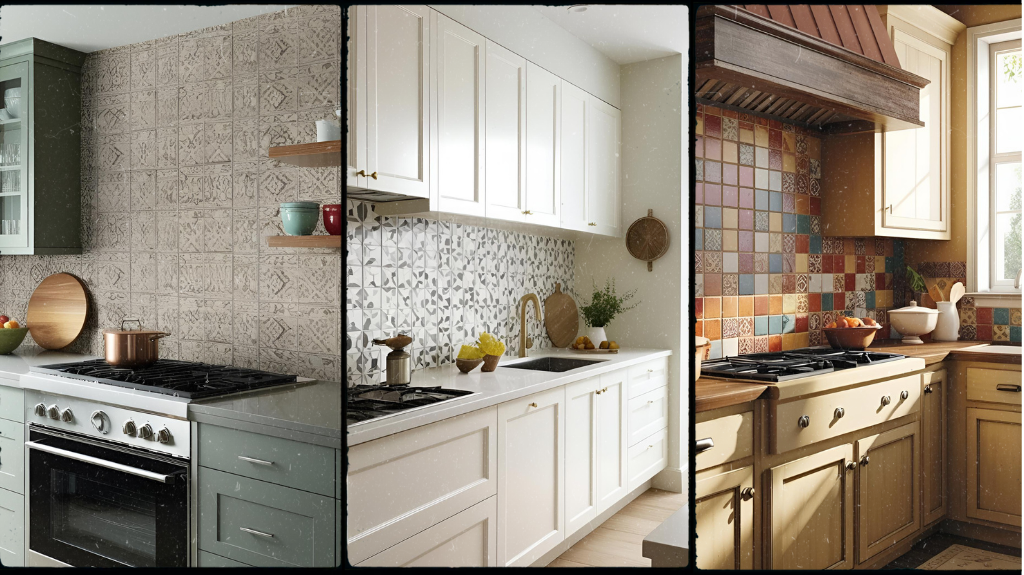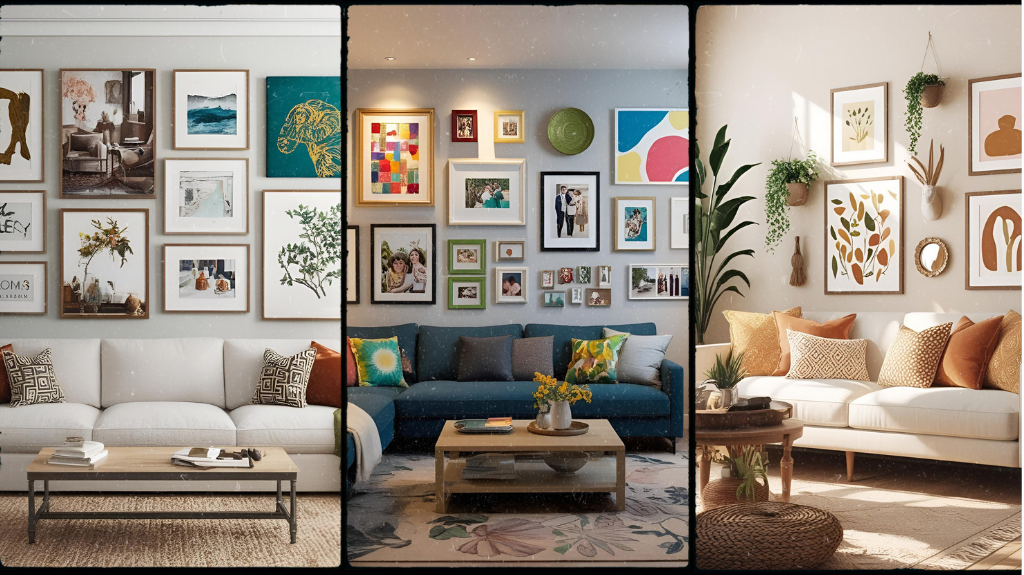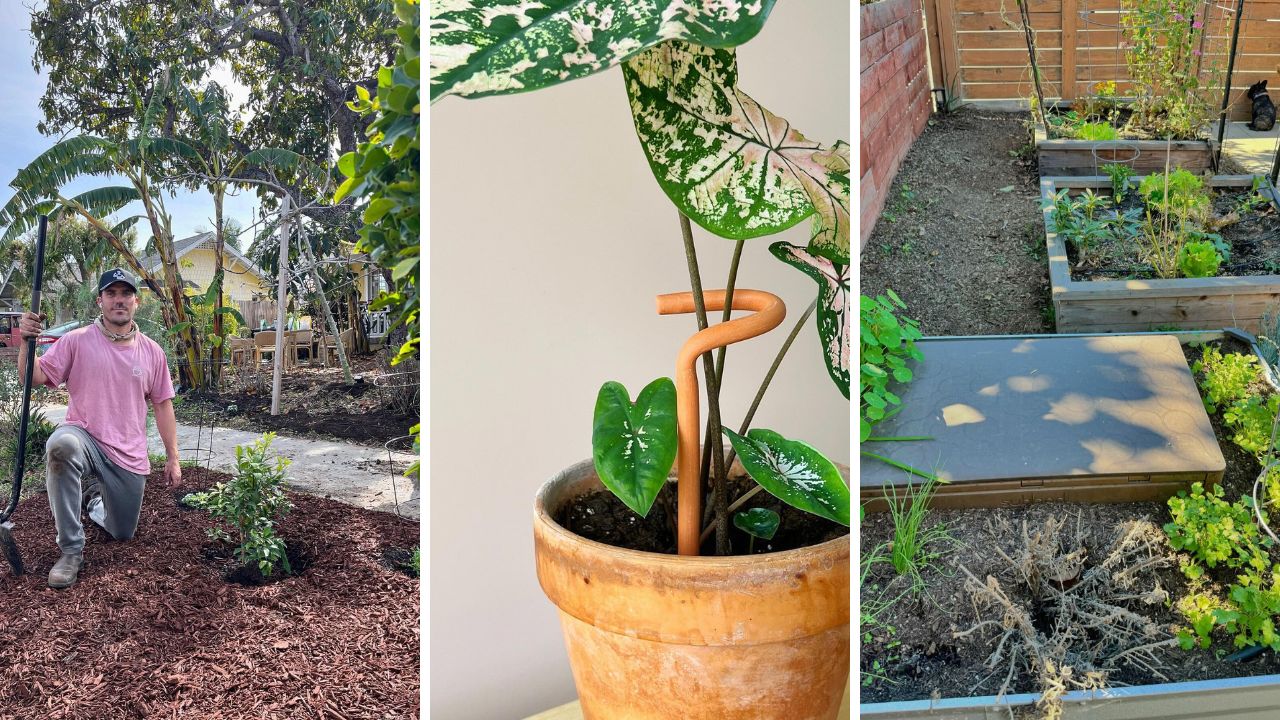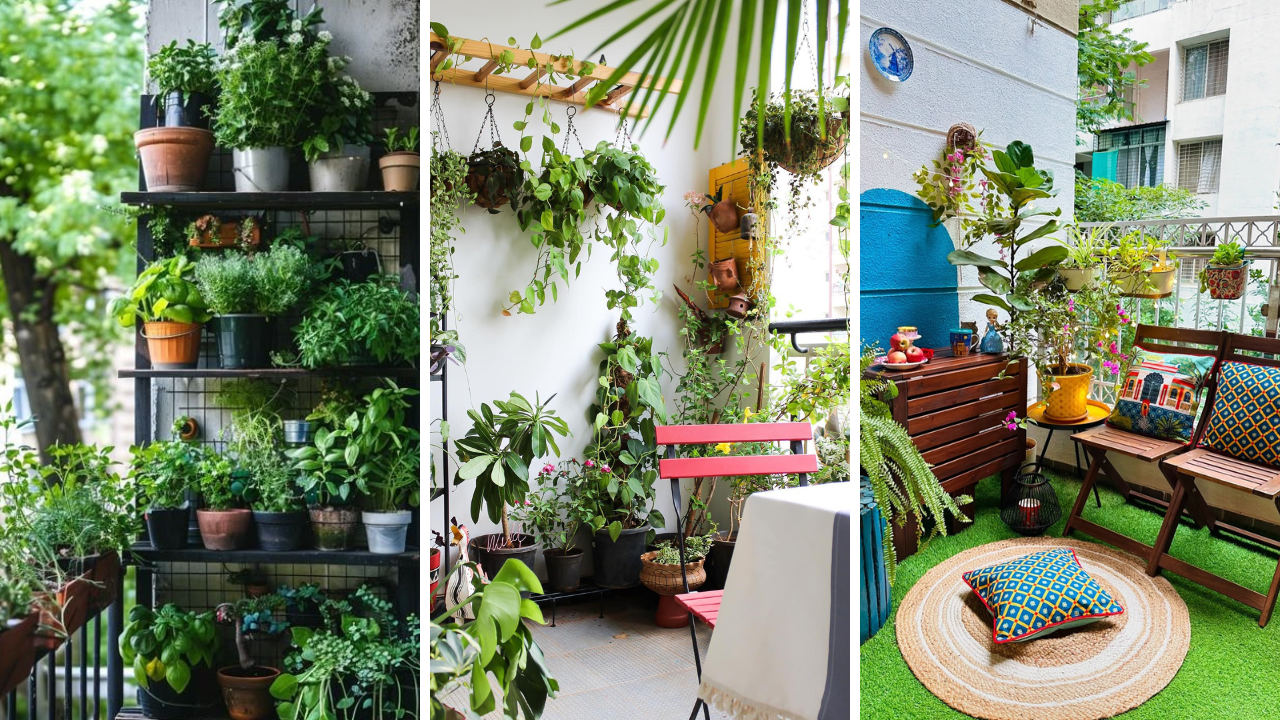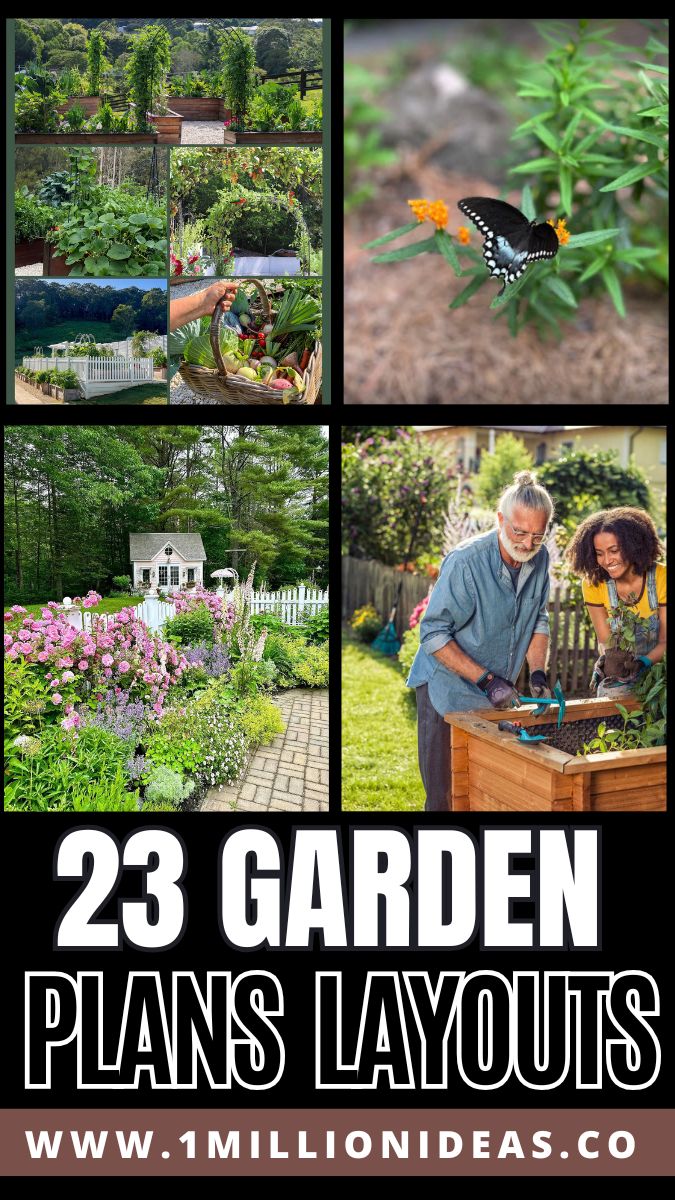
Gardening is not just a hobby—it’s a way to bring nature into your life, create a peaceful retreat, and express your personal style. Whether you’re a seasoned gardener or a beginner, the possibilities for designing your garden are endless. In this post, we’ll explore 23 creative garden layouts that will inspire you to transform your outdoor space into something truly extraordinary. From modern minimalist designs to lush, vibrant flower gardens, these layouts are sure to help you design the garden of your dreams.
1. Modern Zen Garden: Serenity in Simplicity
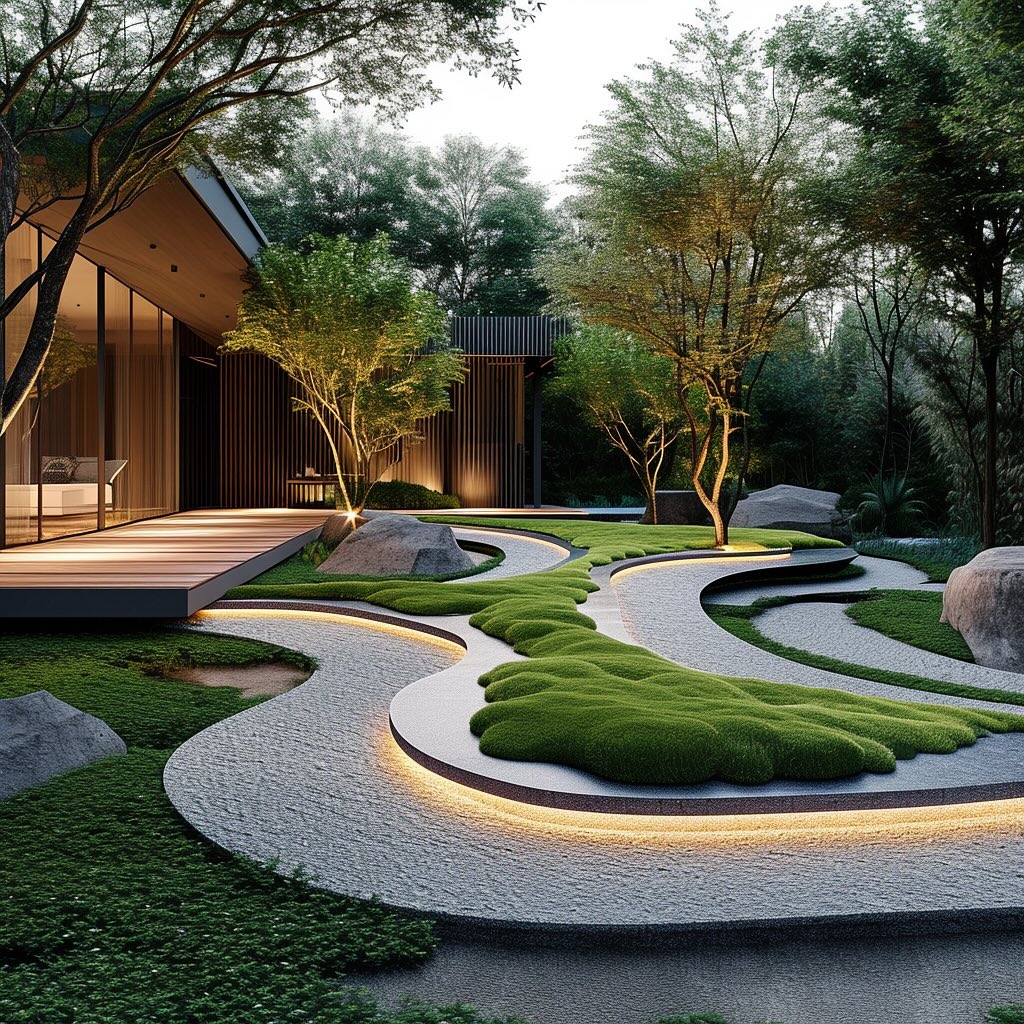
Source@kinetic.farm
A Zen garden is the epitome of tranquility. It’s based on the concept of simplicity, using minimal elements like rocks, sand, and gravel to create a sense of peace and balance. This type of garden encourages mindfulness and reflection, making it perfect for those seeking a retreat from the hustle and bustle of everyday life. To enhance the calming atmosphere, you can incorporate bamboo fencing, stone lanterns, or even a small water feature. The minimalist design allows you to focus on the beauty of nature, creating a meditative space that promotes relaxation and mental clarity. A Zen garden is ideal for small spaces, courtyards, or even as an accent to a larger garden.
2. English Cottage Garden: Embrace Whimsy and Romance
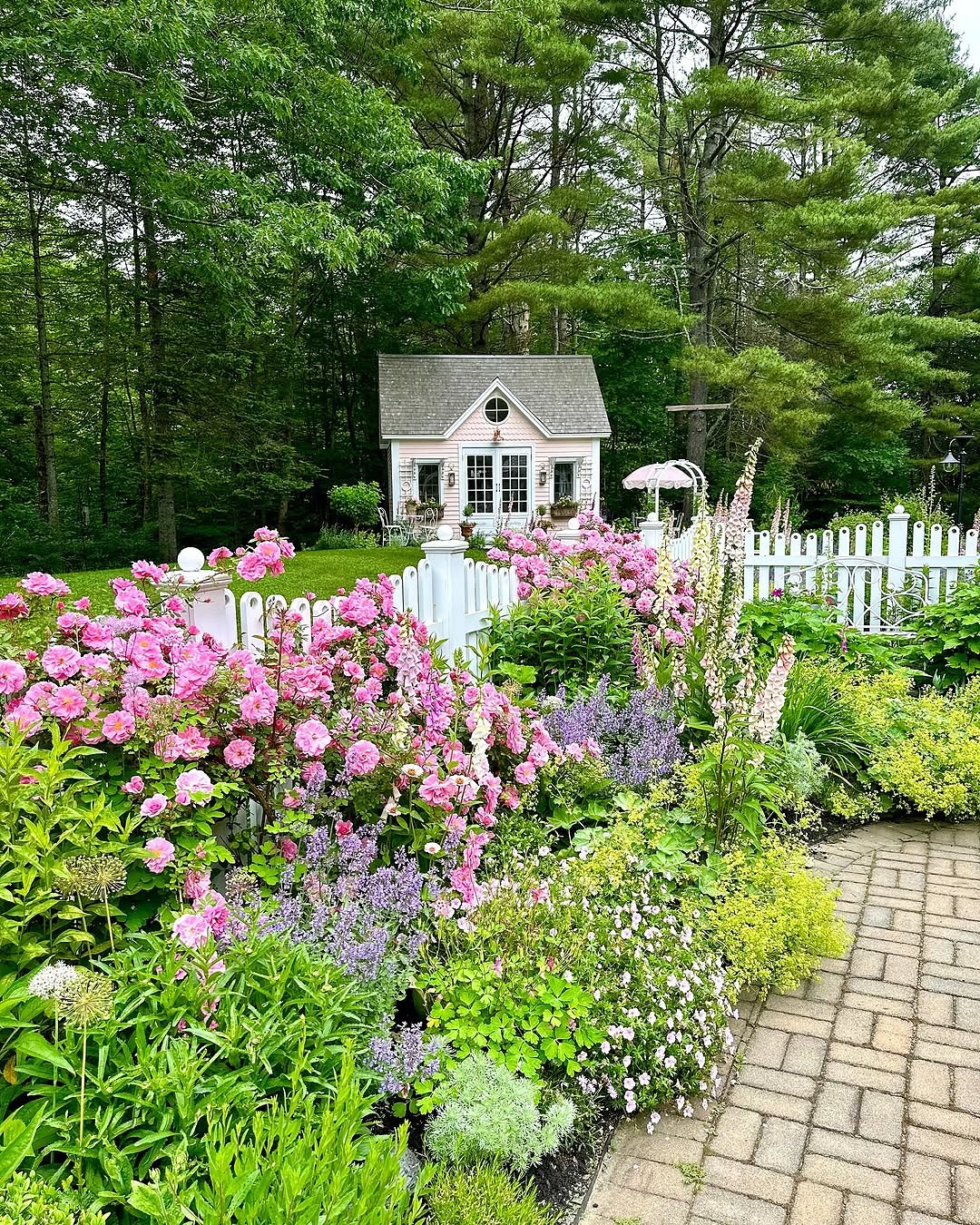
Source@gardenplanning
English cottage gardens are known for their abundance of flowers, inviting colors, and charming, informal style. This layout is perfect for those who love a more romantic and whimsical look in their garden. The key elements of a cottage garden are layers of flowers, herbs, climbing roses, and the use of old-fashioned varieties. These gardens often feature winding pathways, rustic wooden fences, and trellises draped in vines. The beauty of an English cottage garden lies in its relaxed, overflowing nature, where flowers and plants seem to grow naturally and with a sense of purpose. Ideal for creating a peaceful and cozy retreat, this type of garden allows for personal touches, such as vintage garden furniture or decorative statues.
3. Vertical Gardens: Maximize Space with Vertical Planters
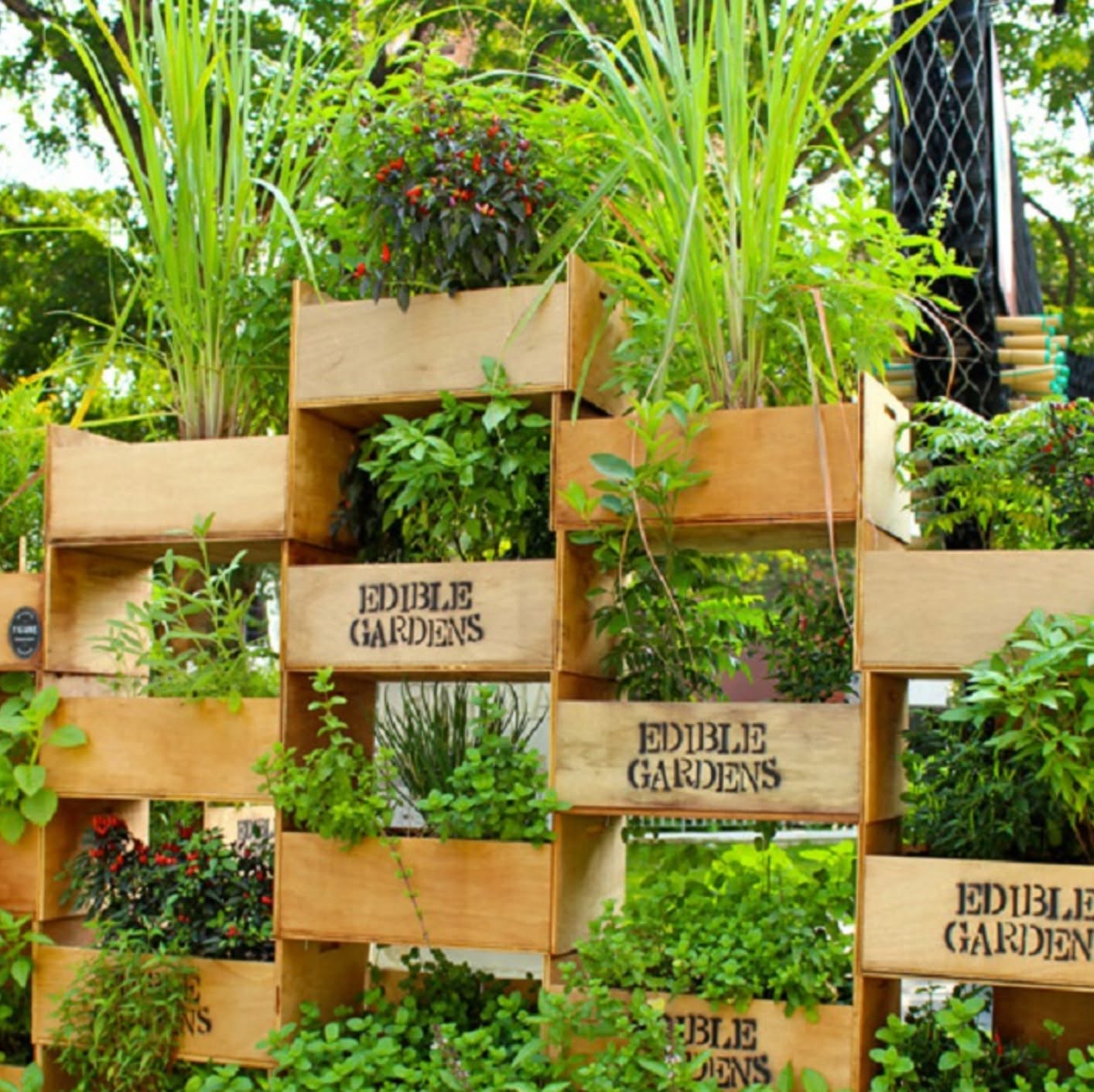
Source@urbangreenfarms
Vertical gardening is the perfect solution for those with limited space but a big love for plants. Whether you live in an apartment, have a small backyard, or simply want to make the most of your outdoor area, vertical gardens allow you to grow a variety of plants in a small footprint. This can be done using wall-mounted planters, trellises, hanging baskets, or even vertical garden towers. The beauty of vertical gardening is that it creates a lush, green wall of plants, making any space feel more vibrant and alive. You can grow a mix of flowers, herbs, and even vegetables, creating a visually stunning and productive garden that doesn’t take up much space. It’s an ideal solution for balconies, city dwellers, or anyone looking to maximize the use of their garden.
4. Succulent Garden: Low Maintenance, High Impact
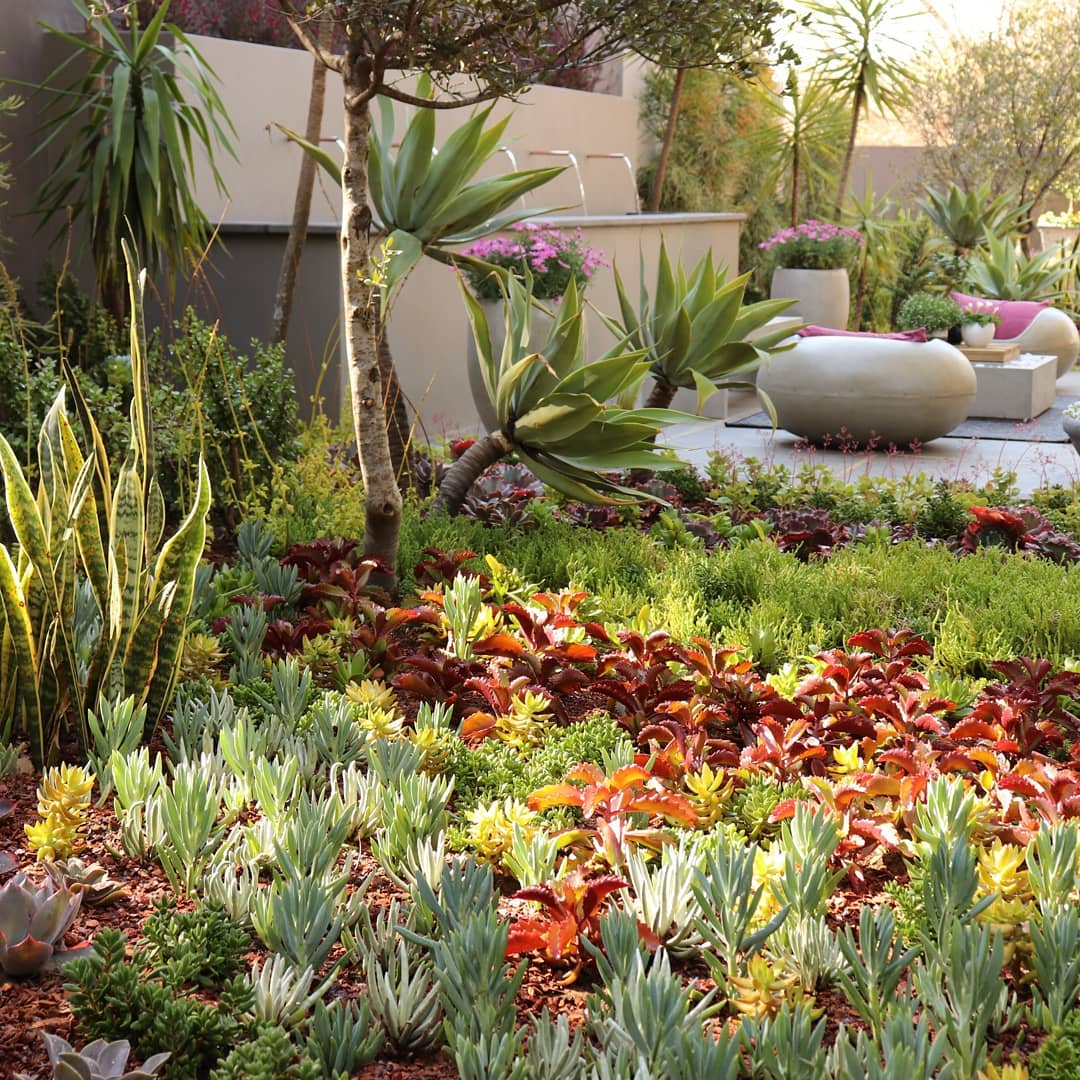
Source@diy_garden_designer
Succulent gardens are gaining popularity for their stunning beauty and low-maintenance needs. These plants, which are adapted to dry conditions, come in a variety of shapes, colors, and sizes, making them perfect for creating a visually striking garden. Succulents are drought-tolerant, which makes them a great choice for those looking to conserve water or for anyone who doesn’t have time to dedicate to frequent watering. A succulent garden can be as simple as a small arrangement of potted plants or as elaborate as an entire section of your garden filled with various types of succulents. Whether placed in a decorative planter, a rock garden, or integrated into a larger landscape design, succulents add texture and interest with their unique appearance and vibrant colors.
5. Herb Garden: Fresh Flavors at Your Fingertips
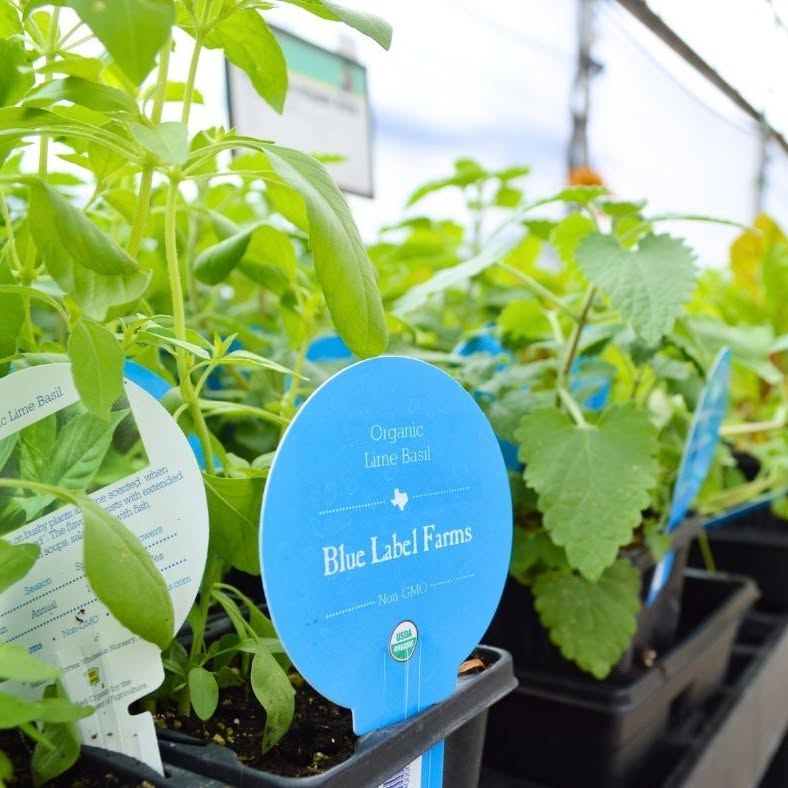
Source@corneliusnursery
An herb garden is an excellent addition to any outdoor space. Not only do herbs add beauty and fragrance to your garden, but they also provide fresh ingredients for cooking. Imagine stepping outside to snip some basil, rosemary, or thyme for your dinner. Herb gardens can be small or large, depending on your available space. You can create a dedicated herb bed in a sunny corner or grow them in containers on a patio or windowsill. The best part about an herb garden is its versatility—you can incorporate them into your flowerbeds, vegetable gardens, or even mix them with decorative plants to create an attractive and functional space. Herbs thrive in well-drained soil and are relatively easy to care for, making them perfect for beginners or experienced gardeners alike.
6. Raised Bed Garden: Perfect for Edible Gardening
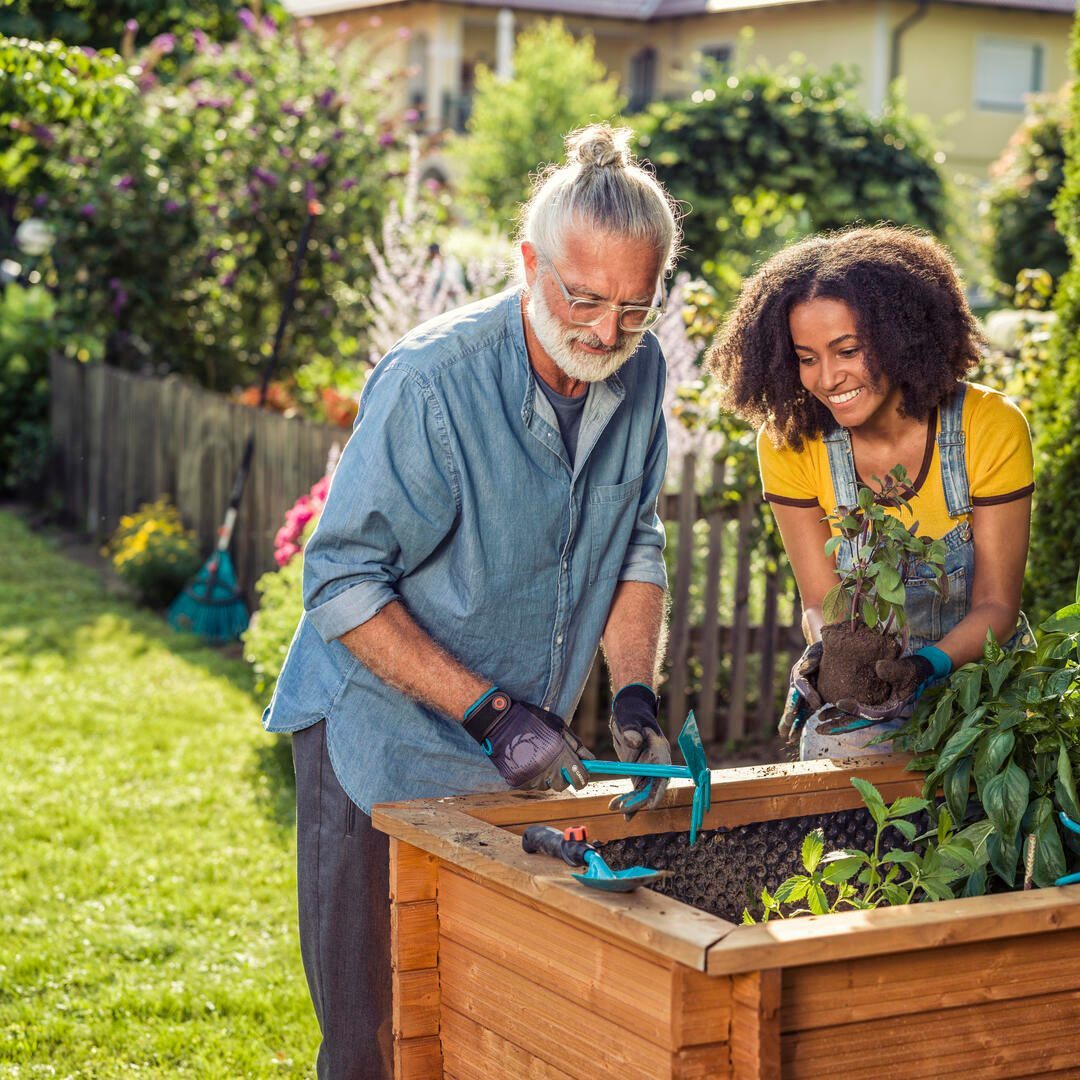
Source@gardena.southafrica
Raised bed gardening offers numerous benefits, especially for those who want to grow their own food but face challenges such as poor soil quality or limited space. By elevating your garden beds, you improve drainage, prevent soil compaction, and reduce weed growth. Raised beds also make gardening more accessible, as they require less bending and can be customized to suit any space, whether it’s a small backyard or a larger plot of land. These gardens are perfect for growing vegetables, herbs, and flowers, as you can create the ideal soil conditions for each plant. Raised beds are also a great way to maximize productivity in a small space, allowing you to grow a variety of crops in a compact area.
7. Rock Garden: Natural Beauty with a Rustic Touch

Source@the_rockgarden
A rock garden is the perfect way to add texture and natural beauty to your outdoor space. By using large stones, rocks, and pebbles, you can create a visually appealing landscape that requires little maintenance. Rock gardens work particularly well in dry or drought-prone areas since they allow for proper drainage and can be planted with drought-tolerant plants such as succulents, cacti, or alpine flowers. These gardens evoke a rustic, natural feel, and they can be customized to fit various sizes, from a small rock pile in a corner to an entire section of your garden dedicated to rocky terrain. The addition of strategically placed plants and ground cover between the rocks adds color and vibrancy to the otherwise minimalist design.
8. Wildflower Meadow: Let Nature Take the Lead
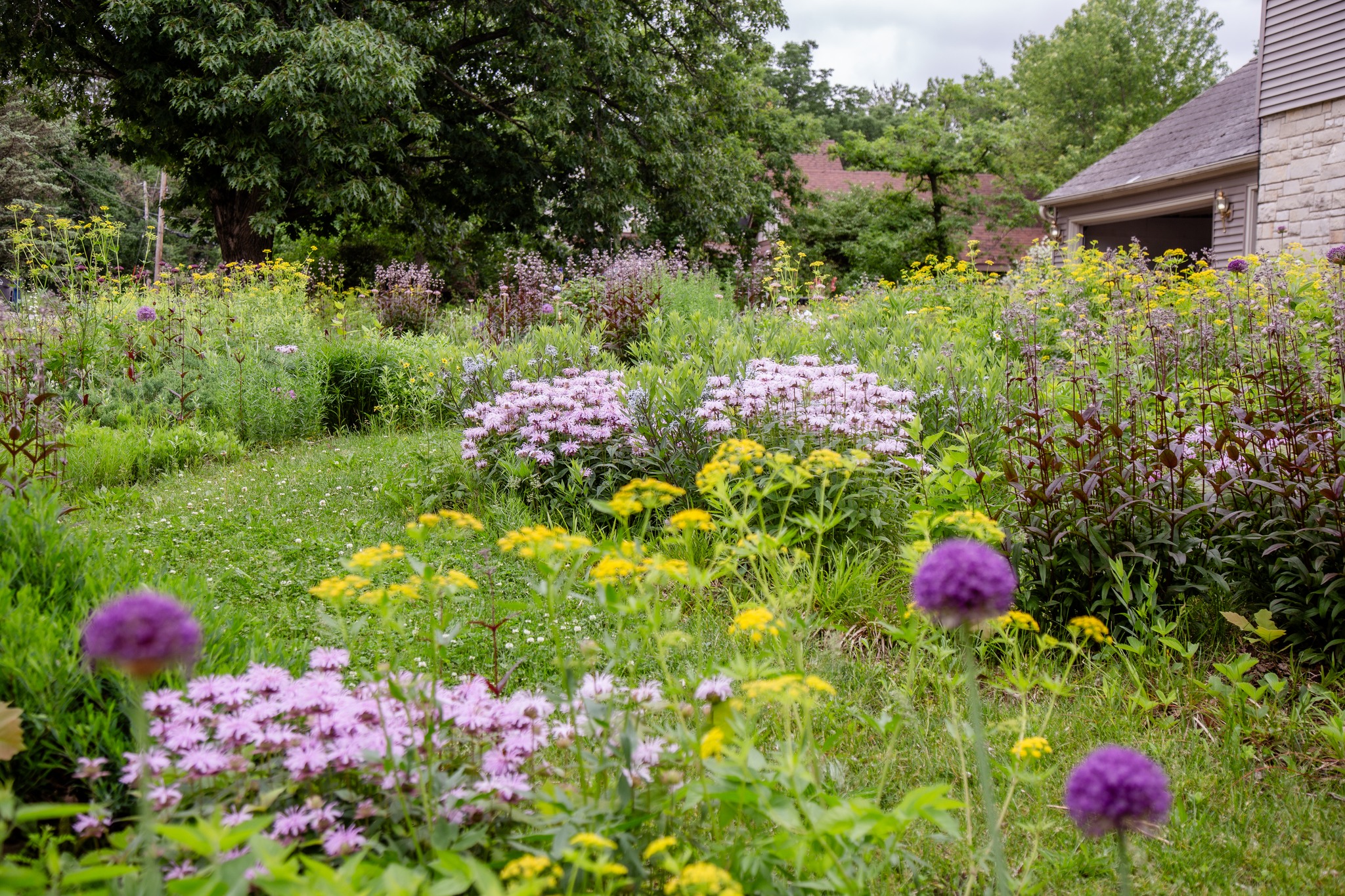
Source@kellydnorris
Wildflower meadows are perfect for those who want to create a low-maintenance, natural garden that attracts wildlife. These meadows are filled with a diverse mix of native flowers, grasses, and plants, creating a colorful and dynamic landscape. Wildflower meadows are particularly great for attracting pollinators like bees, butterflies, and birds, making them an excellent choice for environmentally conscious gardeners. To create a wildflower meadow, simply scatter wildflower seeds over your garden area and let nature do the rest. This layout requires little maintenance once established and offers a beautiful, ever-changing display of color throughout the year.
9. Contemporary Minimalist Garden: Sleek and Stylish
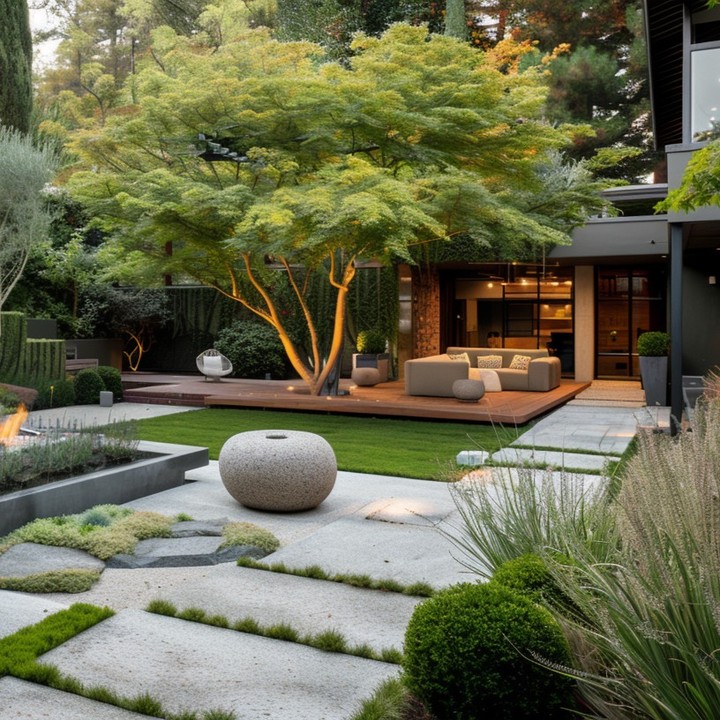
Source@zivertonx_i
For those who prefer clean lines, simplicity, and modern design, a contemporary minimalist garden is the perfect choice. This style emphasizes the use of geometric shapes, neutral tones, and a minimalist approach to landscaping. In a minimalist garden, less is more—think sleek concrete paths, low-maintenance plants like grasses or succulents, and simple furniture. The idea is to create a serene, uncluttered environment where every element has a purpose and the beauty of the space comes from its simplicity. Minimalist gardens are perfect for those who appreciate modern aesthetics and want a garden that complements their contemporary home.
10. Water Garden: Bring the Tranquility of Water to Your Backyard
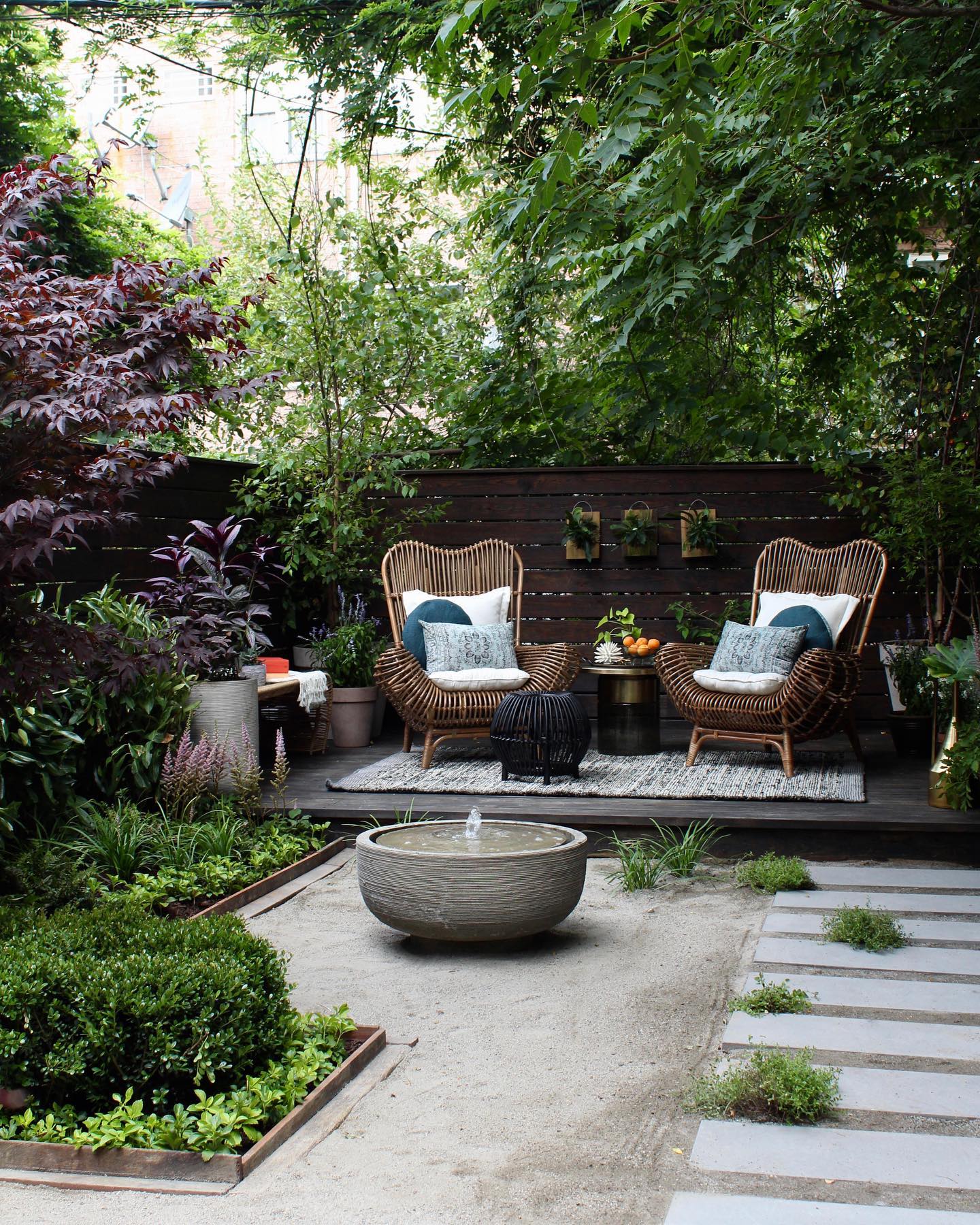
Source@manscapers
Water gardens are a beautiful way to introduce the calming sound of water into your outdoor space. Whether it’s a small pond with fish, a bubbling fountain, or a cascading waterfall, water features add a soothing element to any garden. In addition to their aesthetic appeal, water gardens also provide a habitat for aquatic plants and wildlife, including frogs, birds, and insects. You can incorporate a water garden into your existing landscape by adding a pond or fountain to an unused corner, or you can create a larger water feature as the focal point of your garden. Water gardens can be as simple or elaborate as you like, making them versatile enough for any garden style.
11. Tropical Garden: Exotic Plants for a Luxurious Feel

Source@slowgiliair
If you’re looking to add a touch of the tropics to your backyard, a tropical garden is the perfect way to do so. With lush foliage, vibrant flowers, and tall palms, tropical gardens create a vacation-like atmosphere that transports you to a faraway paradise. These gardens thrive in warm, humid climates, but you can still create a tropical feel in cooler regions by using container plants that can be brought inside during the colder months. Tropical plants such as banana trees, bird-of-paradise, and hibiscus are just a few examples of the beautiful flora you can use to create your own exotic oasis. Incorporating water features, such as fountains or small ponds, can further enhance the lush, tropical vibe.
12. Greenhouse Garden: Extend Your Growing Season
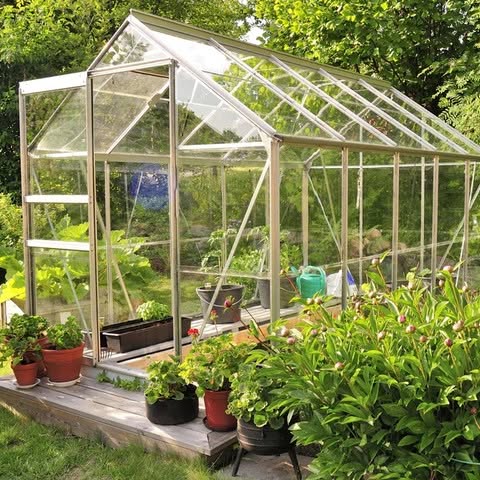
Source@steveregancompany
Greenhouses are an excellent way to extend your growing season, allowing you to grow plants year-round, even in colder climates. By creating a controlled environment with regulated temperature, light, and humidity, a greenhouse can support a variety of plants, from vegetables and herbs to flowers and tropical plants. Whether it’s a small greenhouse attached to your home or a freestanding structure in your backyard, this layout offers a variety of benefits. Greenhouses protect plants from the elements, allowing you to grow crops during the winter or start seeds earlier in the spring. Plus, they provide a dedicated space for nurturing delicate plants that require specific conditions to thrive.
13. Fairy Garden: A Magical Escape
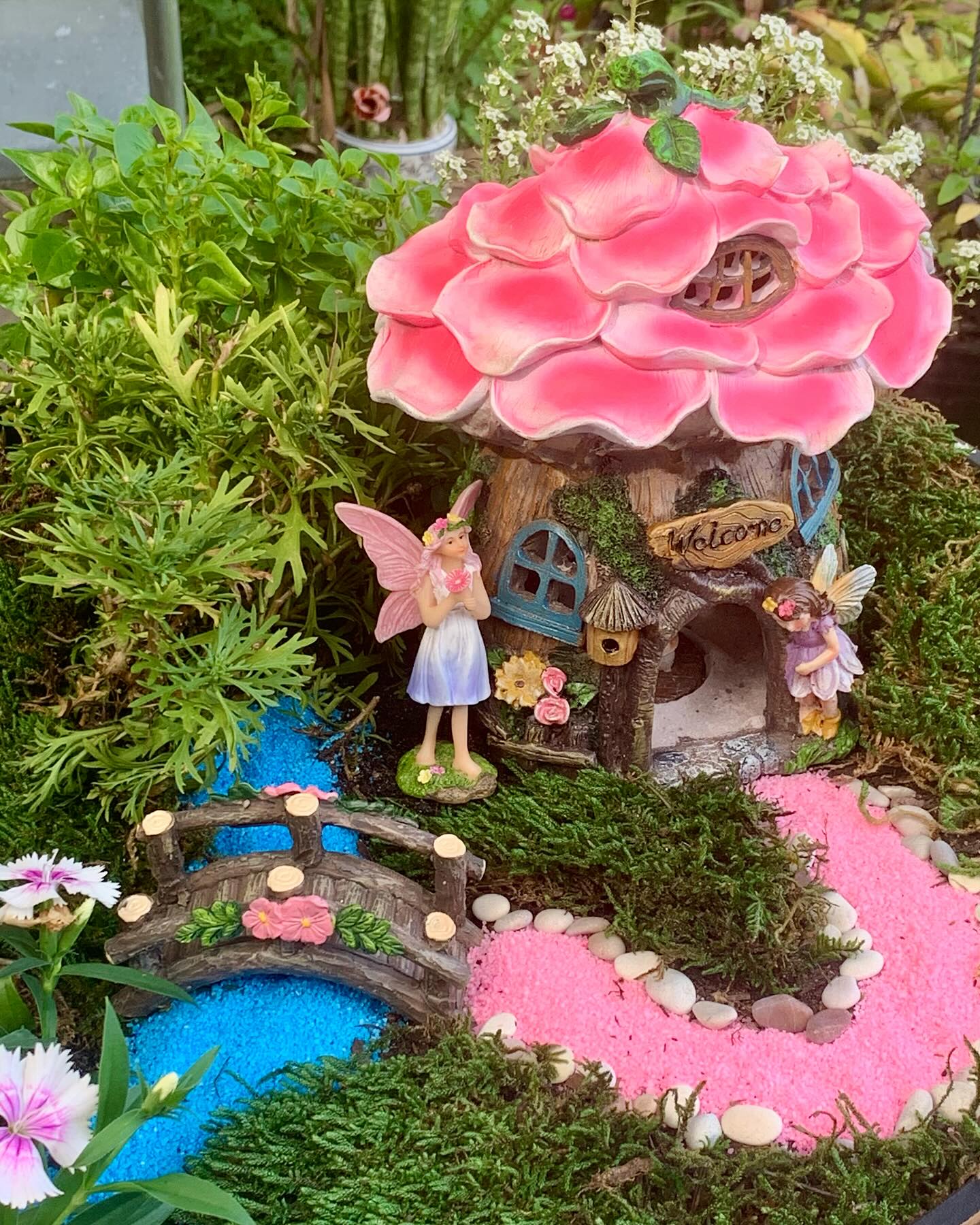
Source@gardensparkle
Fairy gardens are whimsical and magical spaces that transport you to a world of enchantment. These miniature gardens are filled with tiny houses, fairy figurines, and natural elements like moss, tiny flowers, and pebbles. Often designed in small containers or within a section of a larger garden, fairy gardens bring out the imagination and creativity in gardeners. Whether you want to create a fairy haven beneath a tree or in a corner of your yard, these gardens allow you to use your creativity to design a little world of your own. To build a fairy garden, you’ll need to choose small plants that thrive in containers, along with charming accessories like tiny benches, bridges, or lanterns. Fairy gardens are perfect for families with children, as they can involve them in the design and care, creating a magical family activity.
14. Pergola Garden: Shade and Style in One
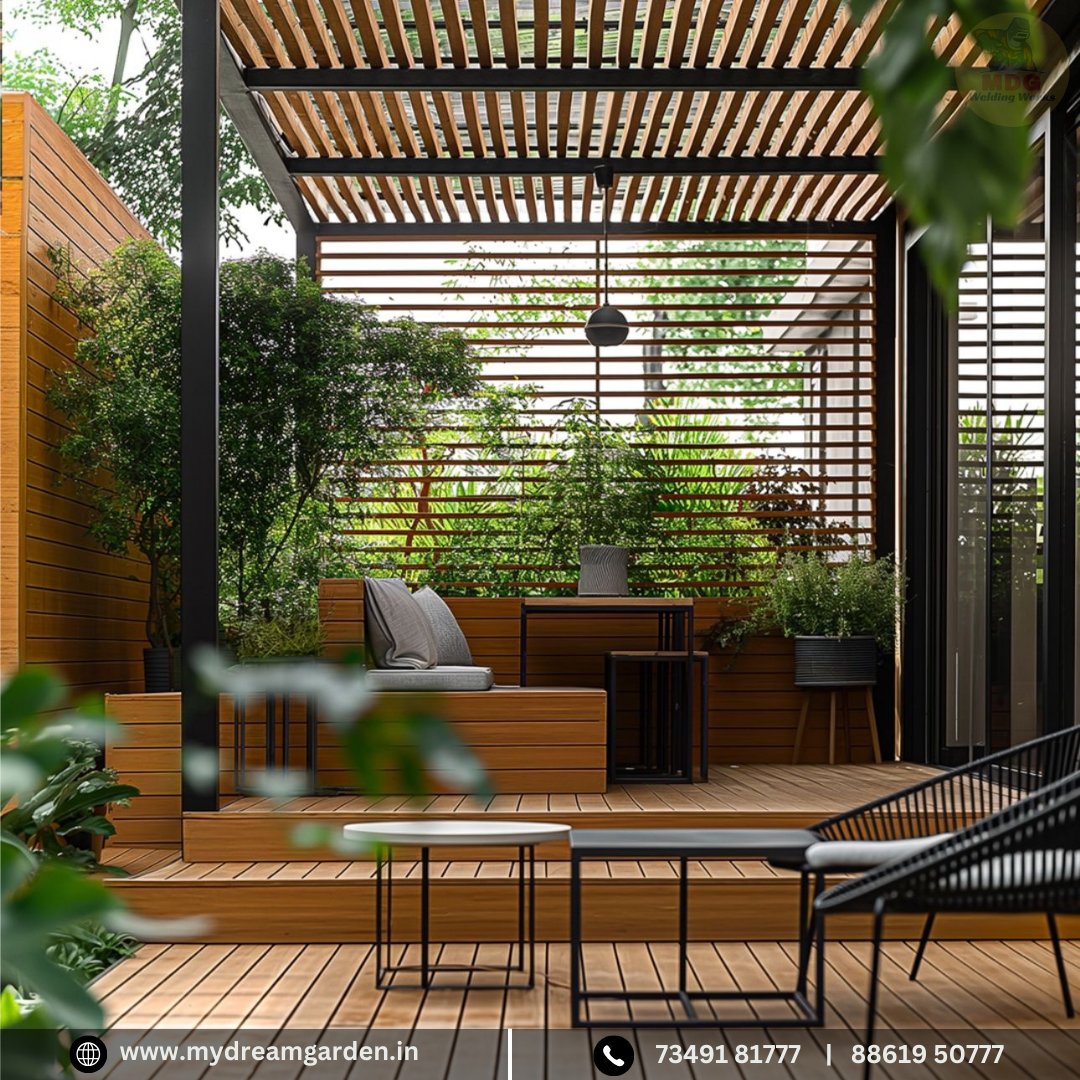
Source@pergoladesign.in
A pergola garden is a great way to combine functionality with style. A pergola serves as both a structure for climbing plants and an outdoor living area that provides shade, making it an ideal feature for summer months. You can cover the top with vines such as wisteria, grapevines, or clematis, allowing them to create a canopy of flowers or leaves. This can provide a beautiful shaded area for dining, lounging, or enjoying the outdoors. Pergolas also help define garden spaces, making them perfect for creating a relaxing garden retreat or a cozy nook within a larger garden. Add string lights or lanterns for an enchanting evening atmosphere, and you’ll have a space that’s both functional and visually stunning.
15. Vegetable Garden: Fresh Food at Your Doorstep
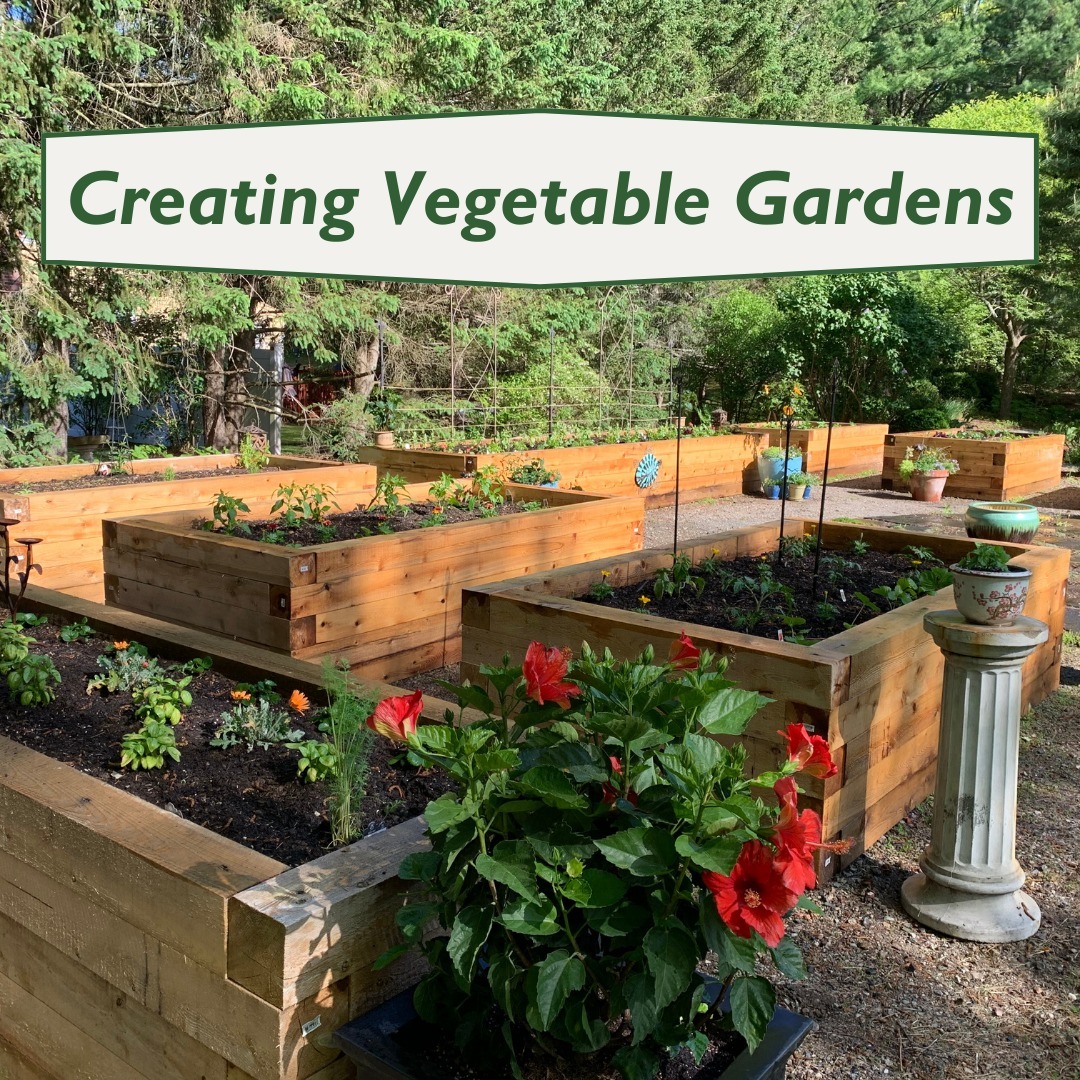
Source@thegardencontinuum
If you’re looking to create a garden that’s both beautiful and productive, a vegetable garden is an excellent choice. Growing your own vegetables allows you to enjoy fresh, homegrown food right from your backyard. You can design your garden with raised beds, container gardening, or even a traditional in-ground garden. Start with easy-to-grow vegetables such as tomatoes, lettuce, peppers, and cucumbers, and gradually expand to more exotic varieties as you gain experience. Vegetable gardens can be designed in a variety of layouts, from orderly rows to more informal and creative designs. Adding flowers to your vegetable garden can not only enhance its beauty but also attract pollinators to ensure a better harvest. Whether you have a large plot or just a few pots on a patio, vegetable gardening is a rewarding and practical way to enhance your garden.
16. Feng Shui Garden: Harmonizing Energy and Nature
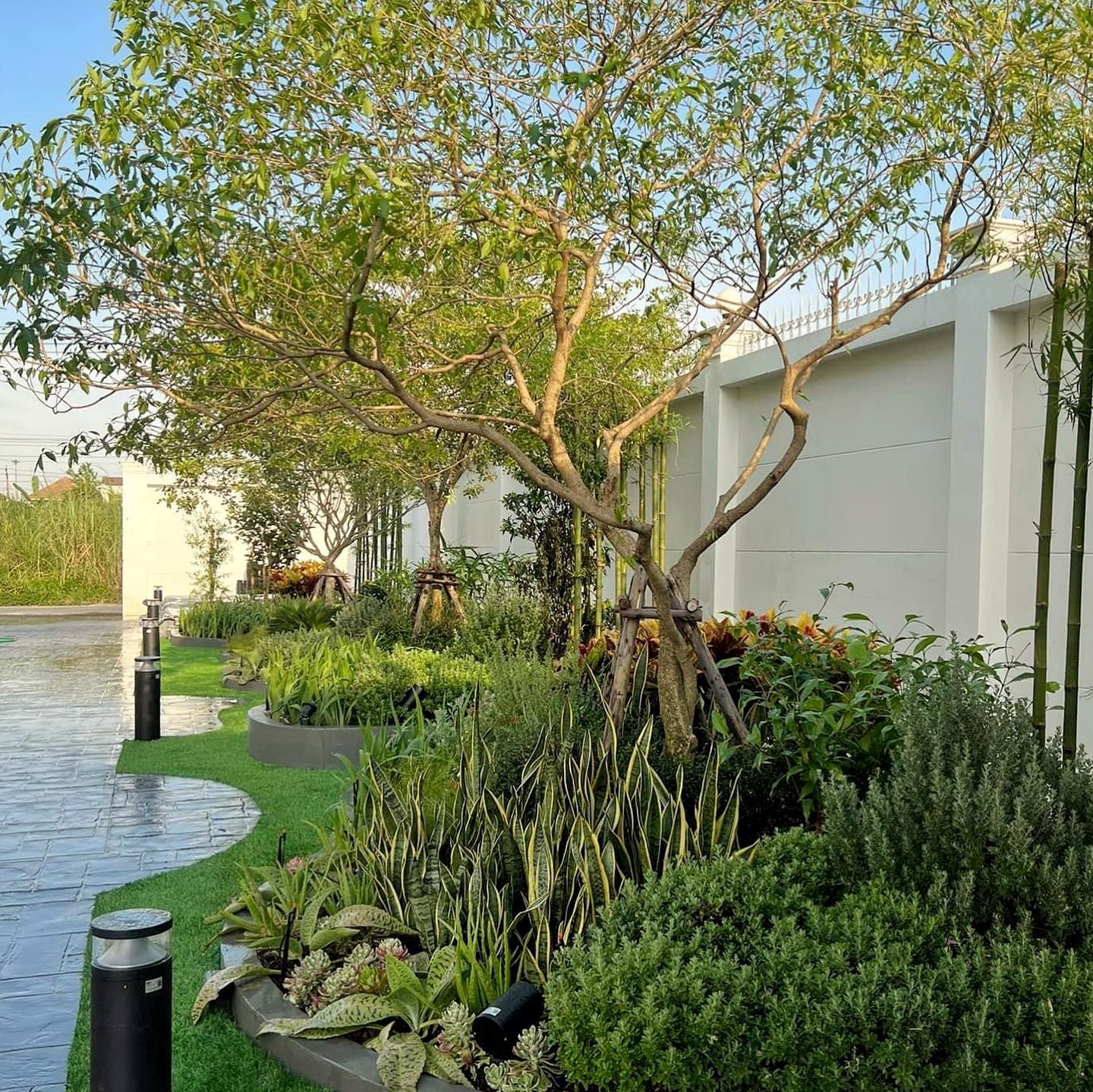
Source@wadistudio_th
Feng Shui is the ancient Chinese practice of arranging elements to promote harmony and positive energy in your surroundings. In a Feng Shui garden, the placement of plants, water features, stones, and structures is critical to creating balance and tranquility. The aim is to create a peaceful and nurturing environment that supports your well-being. Key principles of Feng Shui in gardening include the use of flowing water to represent wealth and prosperity, the careful positioning of plants to ensure they bring positive energy, and using elements like rocks and wood to promote stability. A Feng Shui garden can be as simple or elaborate as you desire, but the key is to focus on balance, symmetry, and creating a calming atmosphere. This type of garden is perfect for those who want to cultivate an environment that supports mental clarity, health, and peacefulness.
17. Shade Garden: Embrace Cool, Calm Spaces
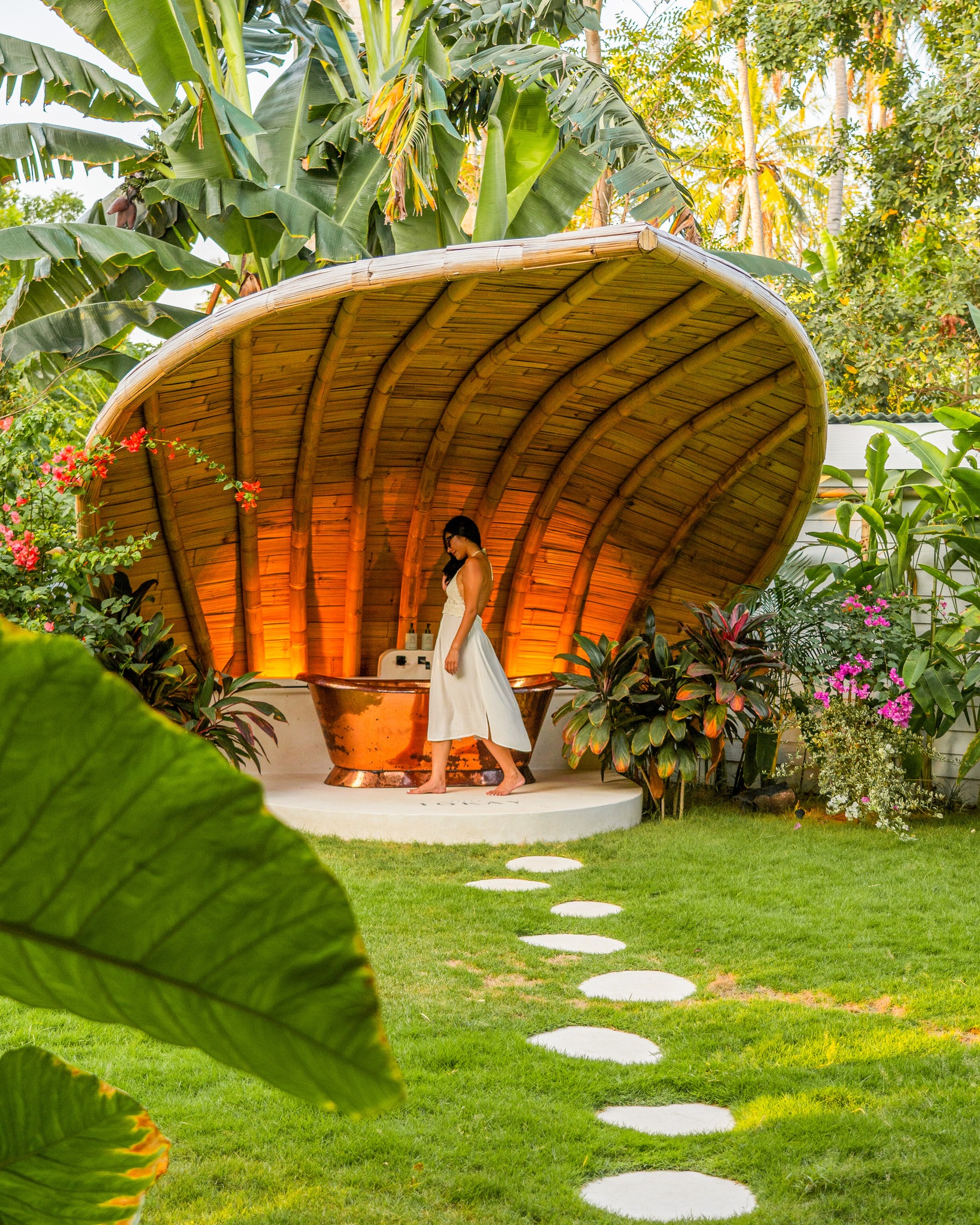
Source@villatokay
Shade gardens are perfect for areas of your yard that receive little direct sunlight. Many beautiful plants thrive in shaded conditions, and a shade garden can become a lush oasis of greenery and tranquility. Plants like hostas, ferns, and astilbes are ideal for shady areas, offering rich foliage and colorful blooms without needing full sun. Shade gardens are also great for creating cool, relaxing spaces in hot climates, where you can escape from the heat and enjoy the peaceful ambiance of nature. Incorporating elements like stone paths, benches, or even a small water feature will enhance the soothing atmosphere of your shade garden. A shade garden is ideal for transforming neglected, dark areas of your yard into stunning, serene spaces.
18. Butterfly Garden: Attract Beautiful Creatures
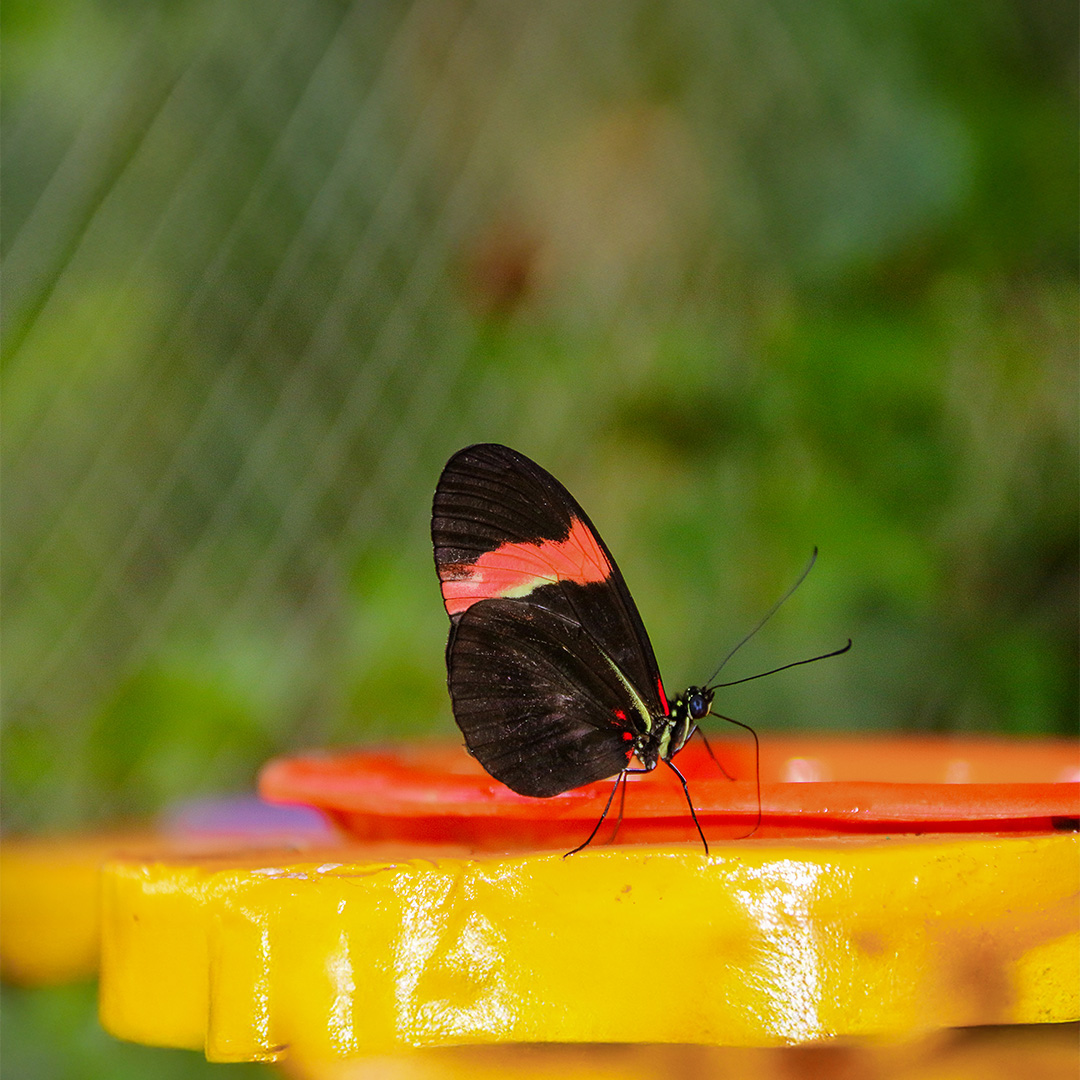
Source@dubaibutterflygarden
A butterfly garden is designed to attract butterflies, providing a beautiful and eco-friendly space in your backyard. These gardens typically feature nectar-rich plants like lavender, coneflowers, milkweed, and butterfly bush. By planting these flowers, you’re creating an inviting space for butterflies to feed, rest, and reproduce. A butterfly garden not only adds vibrant colors and movement to your garden but also supports local pollinators and contributes to the overall health of the ecosystem. To make your butterfly garden even more welcoming, consider adding a water feature like a shallow birdbath or puddling stones where butterflies can drink. Whether it’s a small section of your garden or an entire bed dedicated to butterflies, this layout brings life and beauty to any space.
19. Urban Garden: Garden in Small Spaces
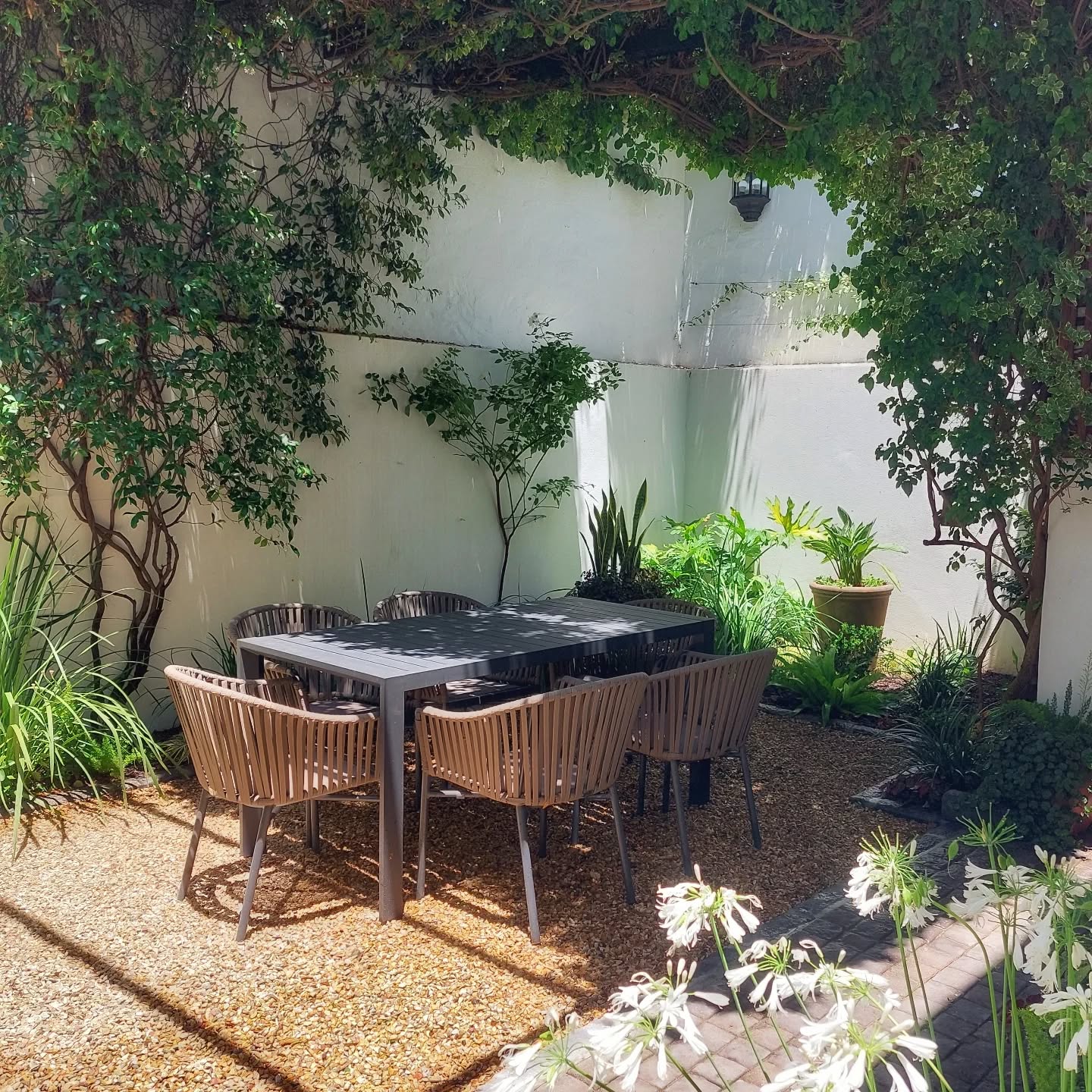
source@smallspacegardens
Urban gardening is about making the most of small spaces in busy, city environments. Whether it’s a balcony, rooftop, or tiny backyard, urban gardens can thrive in even the smallest of spaces. Vertical gardens, container plants, and raised beds are all great ways to maximize your growing area. Urban gardens are also perfect for growing herbs, flowers, and even small vegetables. With the right plan and the right plants, you can turn your urban space into a green oasis that provides beauty, fresh food, and a peaceful escape from the city hustle. Many urban gardeners also use sustainable gardening practices, such as composting and rainwater harvesting, to create an environmentally friendly space. Even in the heart of a city, urban gardening brings a touch of nature and tranquility.
20. Autumn Garden: Fall in Love with the Changing Seasons
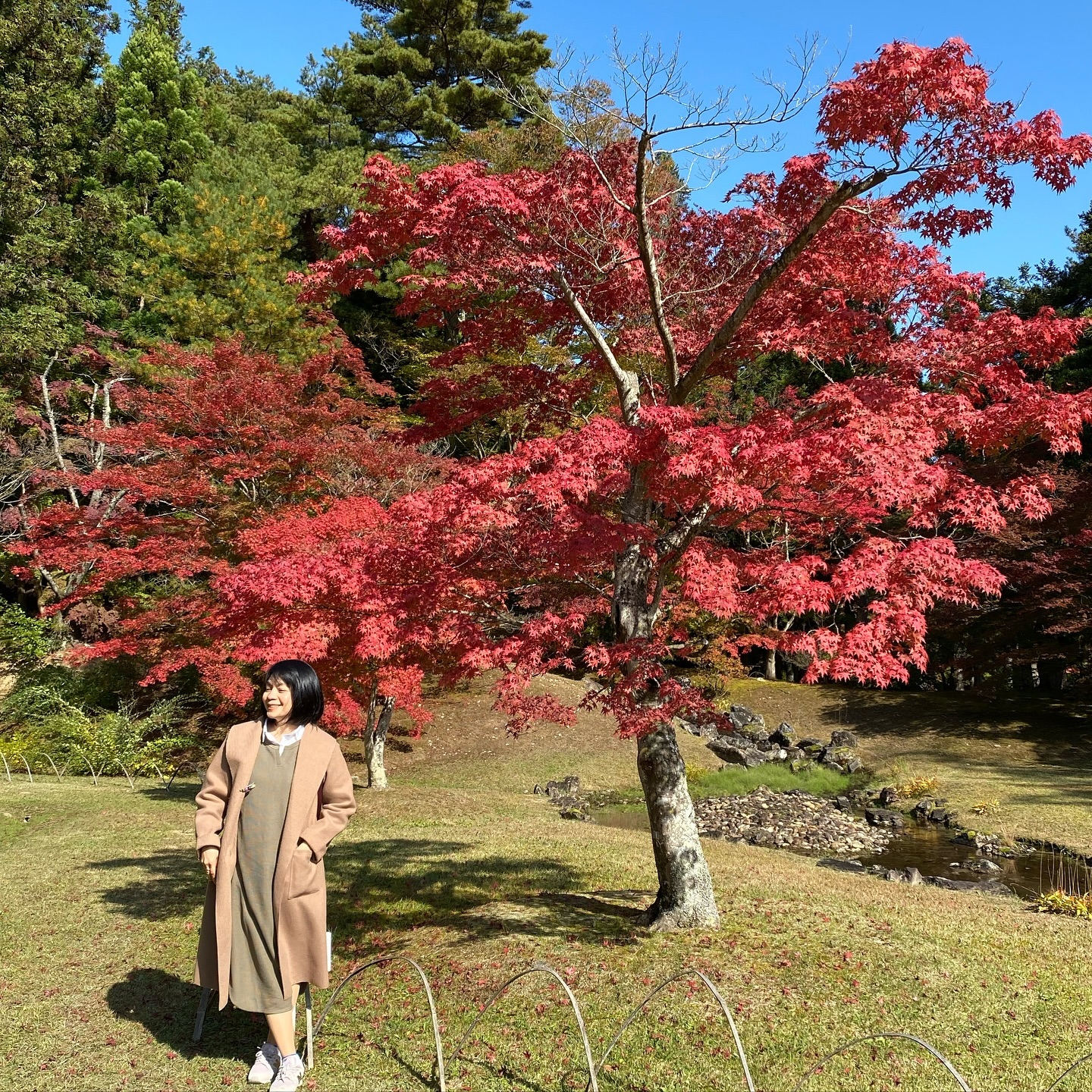
Source@i_am_gracious
An autumn garden embraces the beauty of the changing seasons, with a focus on warm, rich colors and seasonal plants. Fall is a time for cozy gardens filled with pumpkins, gourds, and vibrant chrysanthemums. A well-planned autumn garden highlights the striking colors of fall foliage, with plants like asters, ornamental grasses, and mums providing color through the season. You can also add rustic elements such as hay bales, twinkle lights, or lanterns to bring in a cozy, harvest-themed vibe. Autumn gardens are perfect for creating a welcoming space for outdoor gatherings or for simply enjoying the cooler weather. This type of garden is a celebration of nature’s transformation, bringing seasonal beauty and charm to your outdoor space.
21. Cactus and Desert Garden: Bold, Drought-Tolerant Beauty
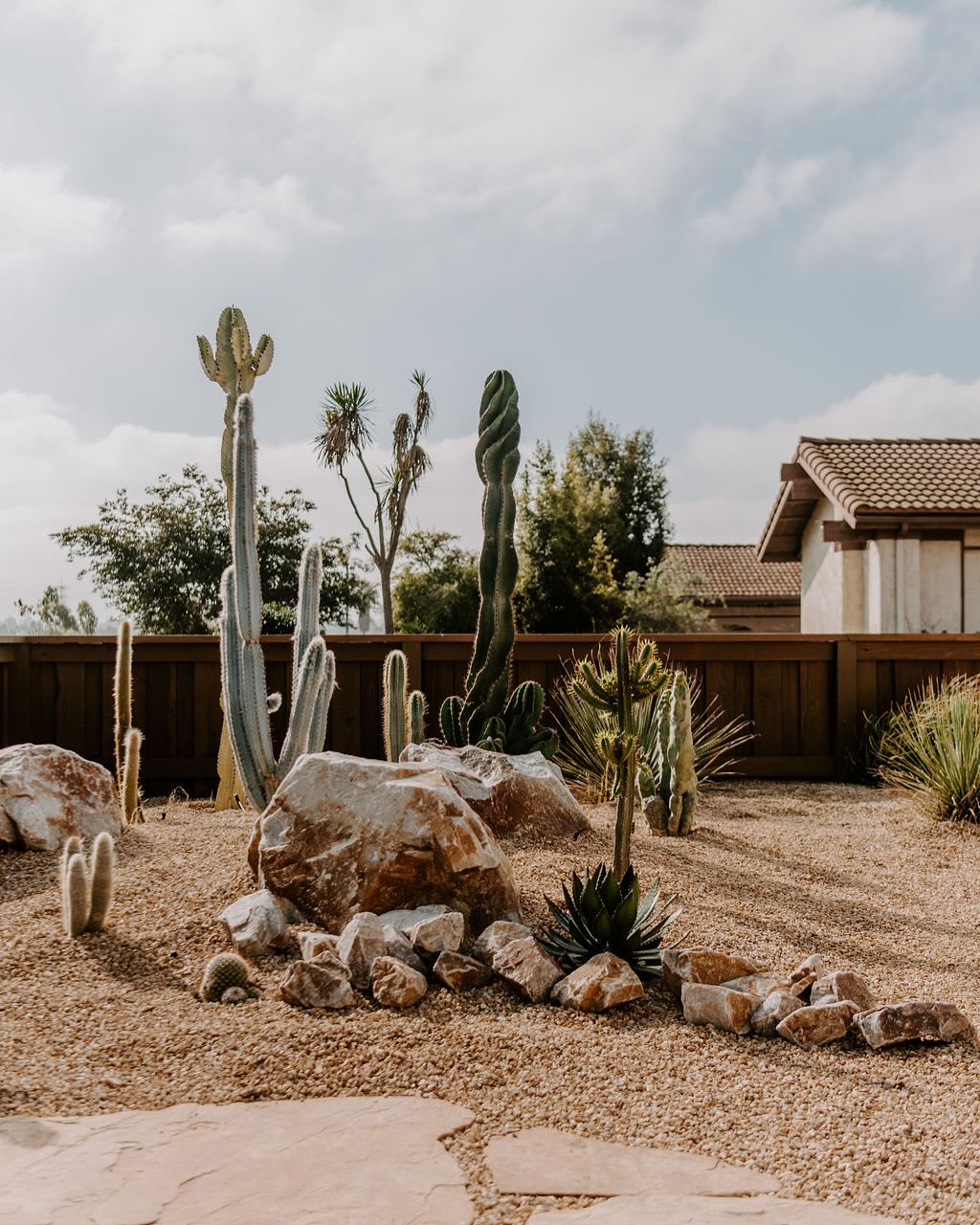
Source@fredricksonlandscapeinc
A cactus and desert garden is an excellent choice for regions that experience long periods of drought or for gardeners who want a low-maintenance, visually striking garden. Cacti, succulents, and other drought-tolerant plants are the stars of these gardens, with their unique shapes, vibrant colors, and striking forms. Desert gardens require little water and are often designed with rocks, sand, and other elements that mimic the natural desert landscape. This type of garden can be both bold and serene, with the sculptural forms of cacti and succulents creating an intriguing focal point. Desert gardens are ideal for hot, dry climates, or for anyone looking to reduce water usage in their gardening practices while still creating a beautiful outdoor space.
22. Butterfly and Bee-Friendly Garden: A Pollinator Paradise
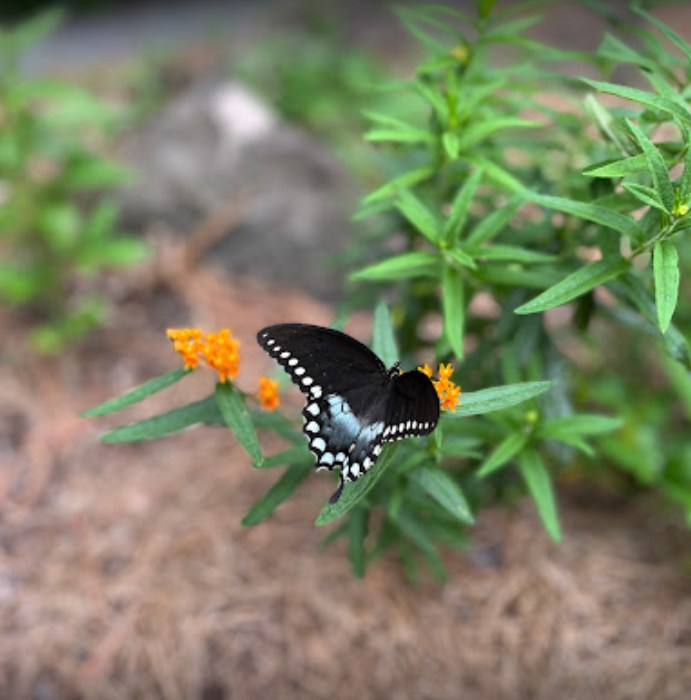
Source@capefearbg
A butterfly and bee-friendly garden focuses on creating a habitat for these vital pollinators, helping support the local ecosystem and ensuring that flowers and vegetables thrive. By planting a mix of nectar-rich flowers such as lavender, zinnias, and bee balm, you’ll attract a variety of pollinators that will help your garden flourish. In addition to flowers, it’s important to provide food and shelter for pollinators—bees need places to rest, and butterflies need spots to lay their eggs. A butterfly and bee-friendly garden often incorporates elements like small water sources, pollen-rich plants, and areas of undisturbed ground where insects can nest. This layout is perfect for gardeners who want to support biodiversity while enjoying the beauty of a thriving, pollinator-filled garden.
23. Sustainable Garden: Grow with the Earth in Mind
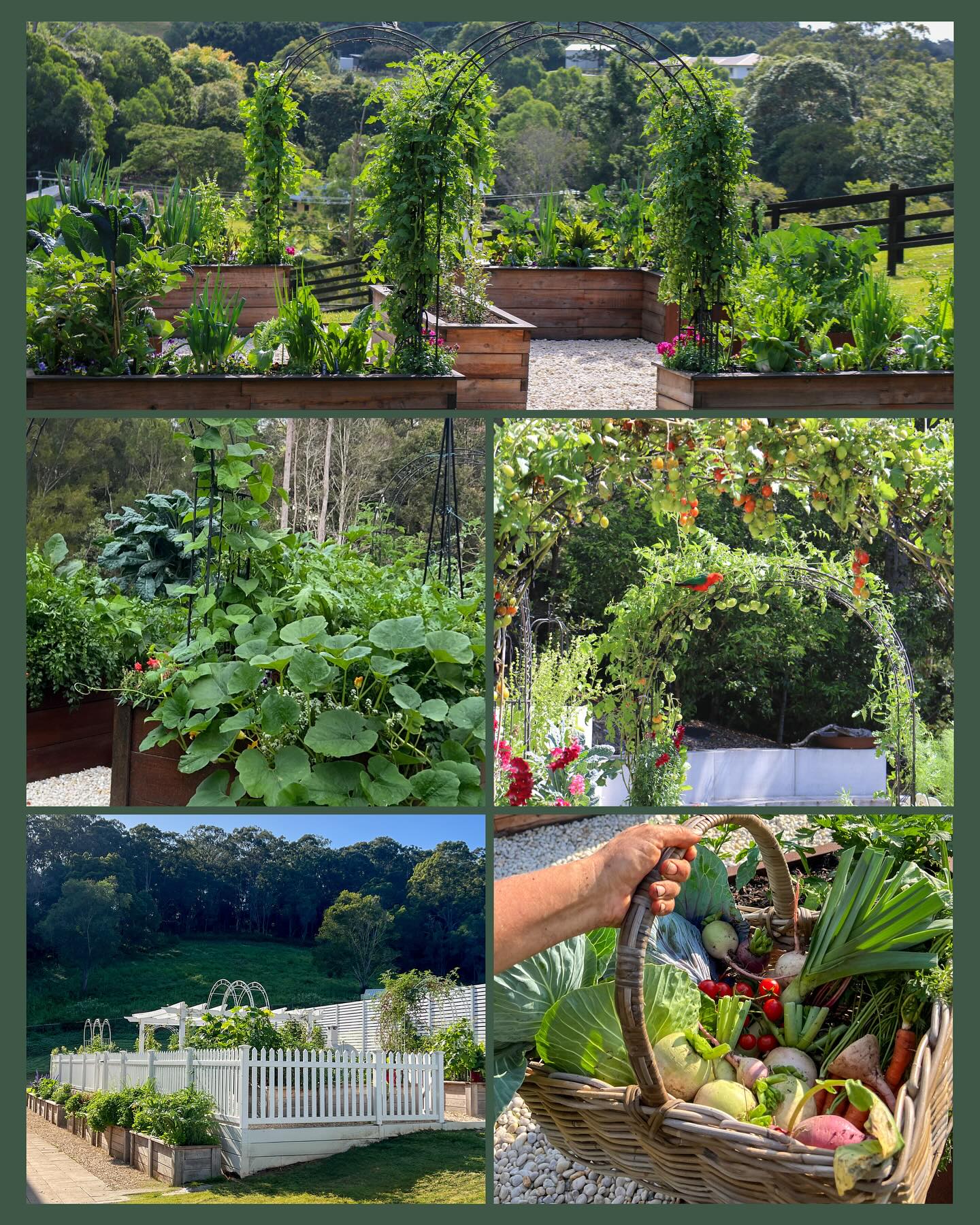
Source@earth_edge_garden
A sustainable garden is one that works in harmony with nature, focusing on eco-friendly practices such as water conservation, composting, and using native plants that require less maintenance and resources. Sustainable gardening is about reducing your environmental impact while creating a beautiful, functional space. This layout often includes drought-tolerant plants, rain gardens that capture runoff, and organic practices that minimize the use of pesticides and fertilizers. You can also incorporate sustainable elements like solar lighting, compost bins, and rainwater harvesting systems. Sustainable gardens are ideal for anyone looking to reduce their carbon footprint and make a positive impact on the environment, all while enjoying a beautiful, thriving garden.

